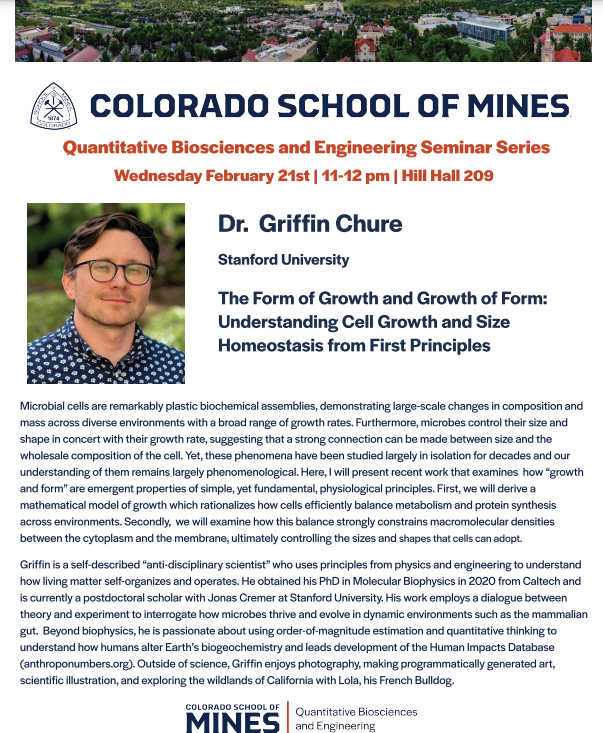
- This event has passed.
QBE Seminar Series – Dr. Griffin Chure
February 21, 2024 @ 11:00 am - 12:00 pm
Free
.
The Form of Growth and Growth of Form: Understanding Cell Growth and Size Homeostasis from First Principles
Microbial cells are remarkably plastic biochemical assemblies, demonstrating large-scale changes in composition and mass across diverse environments with a broad range of growth rates. Furthermore, microbes control their size and shape in concert with their growth rate, suggesting that a strong connection can be made between size and the wholesale composition of the cell. Yet, these phenomena have been studied largely in isolation for decades and our understanding of them remains largely phenomenological. Here, I will present recent work that examines how growth and form are emergent properties of simple, yet fundamental, physiological principles. First, we will derive a
mathematical model of growth which rationalizes how cells efficiently balance metabolism and protein synthesis across environments. Secondly, we will examine how this balance strongly constrains macromolecular densities between the cytoplasm and the membrane, ultimately controlling the sizes and shapes that cells can adopt.
Griffin is a self-described anti-disciplinary scientist who uses principles from physics and engineering to understand how living matter self-organizes and operates. He obtained his PhD in Molecular Biophysics in 2020 from Caltech and is currently a postdoctoral scholar with Jonas Cremer at Stanford University. His work employs a dialogue between theory and experiment to interrogate how microbes thrive and evolve in dynamic environments such as the mammalian gut. Beyond biophysics, he is passionate about using order-of-magnitude estimation and quantitative thinking to understand how humans alter Earth’s biogeochemistry and leads development of the Human Impacts Database
(anthroponumbers.org).Outside of science, Griffin enjoys photography, making programmatically generated art, scientific illustration, and exploring the wildlands of California with Lola, his French Bulldog.